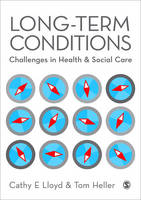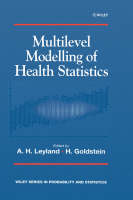Wiley Pathways Introduction to U.S. Health Care
 -15%
portes grátis
-15%
portes grátis
Wiley Pathways Introduction to U.S. Health Care
The Structure of Management and Financing of the U.S. Health Care System
Williams, Steve; Pointer, Dennis D.; Isaacs, Stephen L.; Barr, Tracy L.; Knickman, James R.
John Wiley & Sons Inc
12/2006
408
Mole
Inglês
9780471790754
15 a 20 dias
612
1 The U.S Health Care System 1
Introduction 2
1.1 Gauging the Size of the Health Care Industry 2
Self-Check 4
1.2 Balancing Public and Private Health: Health Care Organizations 4
1.2.1 Protecting Populations: Public Health Care Organizations 5
1.2.2 Serving Individuals: Private Health Care Organizations 5
Self-Check 8
1.3 Identifying Health Systems 9
1.3.1 Types of Health Systems 9
1.3.2 Forming Health Systems 10
Self-Check 11
1.4 Classifying Health Care Industry Sectors 11
1.4.1 Financing 11
1.4.2 Institutional Providers 12
1.4.3 Individual Providers 12
1.4.4 Public Health Agencies 13
1.4.5 Enablers 13
1.4.6 Suppliers 13
1.4.7 Regulators 13
Self-Check 14
1.5 Defining Health and Disease 15
1.5.1 Causes of Disease 15
1.5.2 Analyzing U.S Health and Disease Status 16
Self-Check 18
1.6 Accessing Health Services in the United States 19
1.6.1 Triggers to Utilizing the Health Care System 19
1.6.2 Factors Affecting Utilization 20
1.6.3 The Role of Health Services Administration Research 21
Self-Check 23
Summary 23
Key Terms 23
Summary Questions 25
Review Questions 27
Applying This Chapter 28
You Try It 29
2 Boards and Governance 30
Introduction 31
2.1 Understanding the Role of Governing Boards 31
2.1.1 Determining Mission, Vision, and Values 32
2.1.2 Ensuring Management Performance 33
2.1.3 Ensuring Quality of Care 34
2.1.4 Ensuring Financial Health 34
Self-Check 35
2.2 Board Composition, Structure, and Infrastructure 35
2.2.1 Health Systems 36
2.2.2 Hospitals 37
Self-Check 38
2.3 Challenges Facing Boards 39
2.3.1 Liability of Board Members 39
2.3.2 Reporting and Disclosure of Accounting Information 40
2.3.3 Conflict of Interest 40
2.3.4 Board Performance 41
Self-Check 41
Summary 41
Key Terms 41
Summary Questions 44
Review Questions 44
Applying This Chapter 45
You Try It 46
Part II: Health Care Organization and Financing 47
3 Health Care Provision 47
Introduction 48
3.1 Health Provision at a Glance: Specialty-Care versus Primary-Care 48
3.1.1 Primary-Care Model 49
3.1.2 Specialty-Care Model 49
Self-Check 50
3.2 Primary Care Reforms in the United States 50
3.2.1 Benefits of the Primary Care Model 51
3.2.2 Predicting Primary Care's Future in the United States 52
Self-Check 52
3.3 Performance of the Primary Care Model in the United States 52
3.3.1 Accessibility 53
3.3.2 Continuity 53
3.3.3 Comprehensiveness 54
3.3.4 Coordination 54
3.3.5 Accountability to the Community 54
3.3.6 Its Effect on Primary Care Providers 55
Self-Check 55
3.4 Primary Care Innovations 55
3.4.1 The Primary Care Team 55
3.4.2 Chronic Care Model and Collaborative Care 56
Self-Check 57
3.5 Identifying the PCP 57
3.5.1 Permeable Boundaries Between Generalist, Specialist, and Other Functions 58
3.5.2 Specialists Providing Primary Care 58
3.5.3 Generalists Providing Secondary Care 58
3.5.4 Hospitalists Dedicated to General Inpatient Care 59
3.5.5 Nonphysician Primary Care Clinicians 60
Self-Check 60
3.6 PCPs and the Populations They Serve 60
3.6.1 Health Profession Shortage Areas (HPSAs) 61
3.6.2 Federal and State Strategies 62
Self-Check 63
Summary 63
Key Terms 64
Summary Questions 66
Review Questions 68
Applying This Chapter 72
You Try It 73
4 Financing the U.S Health Care System 74
Introduction 75
4.1 Changing Economic Dynamics 75
4.1.1 Increasing Expenditures 76
4.1.2 Reasons for the Increase 77
4.1.3 Affecting How Health Care is Financed 79
Self-Check 80
4.2 Flow of Funds through the System 80
4.2.1 Where the Money Comes From 80
4.2.2 Where the Money Goes 82
4.2.3 How It Gets There 82
Self-Check 84
4.3 Examining Who Has Health Insurance 84
Self-Check 87
4.4 Categorizing Health Insurance Plans 87
4.4.1 Indemnity plan 88
4.4.2 Service Benefit Plan 89
4.4.3 Managed Care Plan 90
Self-Check 91
4.5 Private Insurance Coverage: Voluntary Health Insurance (VHI) 92
4.5.1 Types of VHI Plans 92
4.5.2 Coverage Variations in VHI Plans 93
Self-Check 94
4.6 Government Insurance Programs: Medicare and Medicaid 94
4.6.1 Social Health Insurance: Medicare 94
4.6.2 Welfare Insurance: Medicaid 96
Self-Check 98
4.7 Health Maintenance Organizations (HMOs) 99
4.7.1 HMO Growth 99
4.7.2 HMO Models 99
Self-Check 101
Summary 101
Key Terms 102
Summary Questions 104
Review Questions 107
Applying This Chapter 108
You Try It 109
Part III: Health Care Resources 110
5 The Health Care Workforce 110
Introduction 111
5.1 Sizing Up the Workforce 111
Self-Check 114
5.2 Understanding the Role of the Physician 114
5.2.1 Counting All Doctors 114
5.2.2 Specialists 116
5.2.3 General practitioners 117
5.2.4 Hospitalists 118
Self-Check 118
5.3 Training Doctors 118
5.3.1 Medical School 119
5.3.2 Residency and Fellowship 119
Self-Check 121
5.4 Nurses 121
5.4.1 Registered Nurses (RNs) 121
5.4.2 Training Requirements 123
5.4.3 Where the Nurses are 123
5.4.4 Other Nursing Personnel: LPNs and LVNs 124
Self-Check 125
5.5 Other Independent Health Professionals 125
5.5.1 Dentists 126
5.5.2 Chiropractors 126
5.5.3 Optometrists 127
5.5.4 Podiatrists 127
5.5.5 Pharmacists 128
Self-Check 129
5.6 Working in Concert with Physicians 129
5.6.1 Physical Therapists 129
5.6.2 Physician Assistants 130
Self-Check 131
Summary 131
Key Terms 132
Summary Questions 135
Review Questions 137
Applying This Chapter 139
You Try It 140
6 Research and Technology 141
Introduction 142
6.1 Understanding Medical Research 142
6.1.1 Advances in Knowledge 143
6.1.2 Advances in Diagnostic Techniques 145
6.1.3 Advances in Treatment Options and
Therapeutic Interventions 146
6.1.4 Advances in Pharmaceuticals 147
6.1.5 Advances in Information and Communication Technologies 147
Self-Check 149
6.2 Research Facilities 149
6.2.1 Public Research Facilities: National Institutes of Health (NIHs) 149
6.2.2 Academic Health Centers 151
6.2.3 Private Research Facilities 152
6.2.4 Core Facilities 152
Self-Check 153
6.3 Funding Research: Knowing Where the Money Comes From 153
6.3.1 Public Funds 153
6.3.2 Private Donors/Benefactors 154
Self-Check 155
6.4 Assessment and Challenges of Continuing Medical Advancement 155
6.4.1 The Shift from Public to Private Research Endeavors 155
6.4.2 Issues Regarding Research in General Internal Medicine 155
6.4.3 The Impact on Academic Health Centers 156
6.4.4 Cost To Health Care 156
Self-Check 157
Summary 158
Key Terms 158
Summary Questions 159
Review Questions 161
Applying This Chapter 162
You Try It 164
Part IV: The Health Care Delivery System 165
7 Hospitals in the U.S. 165
Introduction 166
7.1 The Evolution of Hospitals in the U.S 166
7.1.1 Forming Hospitals: the Refuge Stage 166
7.1.2 Hospitals As the Center of Health Care: Physician Workshop Stage 168
7.1.3 Becoming More Business Oriented: The Business Stage 169
7.1.4 Managing Complex Systems: The System Stage 169
Self-Check 170
7.2 Components and Cost of American Hospitals 170
7.2.1 Hospital Components 170
7.2.2 Hospital Costs 171
Self-Check 172
7.3 Classifying Hospitals 173
7.3.1 Length of Stay: Short-and Long-Term Hospitals 174
7.3.2 Type of Service: General and Specialty Hospitals 174
7.3.3 Ownership: Nonprofit, Proprietary, and Governmental 175
Self-Check 176
7.4 Care and Competition in the Twenty-First Century 177
7.4.1 Hospital Care 177
7.4.2 Competition in Health Care 178
Self-Check 179
Summary 179
Key Terms 180
Summary Questions 182
Review Questions 183
Applying This Chapter 184
You Try It 185
8 Ambulatory Care 186
Introduction 187
8.1 Understanding Ambulatory Care 187
8.1.1 The Growing Reliance on Ambulatory Care 188
8.1.2 Accessing Ambulatory Care 189
8.1.3 Paying For Ambulatory Care 189
8.1.4 Ambulatory Care Accreditation 190
Self-Check 191
8.2 Ambulatory Care Settings and Providers 191
8.2.1 Physician Offices: Solo and Group Practices 192
8.2.2 Emergency Rooms and Hospital Outpatient Departments 193
8.2.3 Urgent Care Facilities 194
8.2.4 Same-Day Surgery Centers 194
8.2.5 Community Health Centers and Clinics 195
8.2.6 Student Health Centres or Clinics 196
8.2.7 Occupational Health Programs 197
Self-Check 197
8.3 Home Health and Visiting Nurse Agencies 197
Self-Check 199
Summary 199
Key Terms 200
Summary Questions 201
Review Questions 202
Applying This Chapter 204
You Try It 205
9 Long-Term Care 206
Introduction 207
9.1 Understanding Long-Term Care 207
9.1.1 Typical Long-Term Care Services 207
9.1.2 People Who Need Long-Term Care 208
Self-Check 209
9.2 Personal Care Facilities 209
9.2.1 Assisted Living Facilities 210
9.2.2 Continuing Care Retirement Communities (CCRCs) 210
9.2.3 Congregate Care Facilities 211
9.2.4 Nursing Homes 211
9.2.5 Alzheimer's /Dementia Facilities 213
Self-Check 214
9.3 Community-Based and Home Health Care 214
9.3.1 Receiving Care at Home 215
9.3.2 Taking Advantage of Community-Based Care 216
Self-Check 218
9.4 Rehabilitation Centers 218
Self-Check 219
9.5 Hospice Care 219
9.5.1 Hospice Service Providers 219
9.5.2 Hospice Services 220
9.5.3 Accessing Hospice Care 221
9.5.4 Financing Hospice Care 222
Self-Check 222
Summary 222
Key Terms 222
Summary Questions 225
Review Questions 226
Applying This Chapter 227
You Try It 229
10 Caring For Special Populations 230
Introduction 231
10.1 Caring For Mentally Ill Patients 231
10.1.1 Providing Mental Health Services 231
10.1.2 Paying For Mental Health Services 234
10.1.3 Challenges To Accessing And Providing Care For Mentally Ill Patients 235
10.1.4 Legal Issues Regarding Health Care for Mentally Ill Patients 237
Self-Check 239
10.2 Homeless Patients 239
10.2.1 Health Issues in the Homeless Population 240
10.2.2 Challenges in Providing Health Care to Homeless 240
Self-Check 241
10.3 Veterans 241
10.3.1 Health Issues For Veterans 241
10.3.2 Challenges in Providing Health Care to Veterans 242
Self-Check 243
10.4 Immigrants 243
10.4.1 Challenges in Providing Health Care to Immigrants 243
10.4.2 Legal Issues Regarding Health Care for Immigrants 244
Self-Check 245
10.5 Caring For Other Special Populations 245
10.5.1 People With AIDS and HIV 245
10.5.2 Victims of Violence 246
Self-Check 246
Summary 247
Key Terms 247
Summary Questions 249
Review Questions 251
Applying This Chapter 251
You Try It 253
11 Caring For Uninsured Patients 254
Introduction 255
11.1 Identifying Uninsured Patients 255
Self-Check 257
11.2 Accessing Health Care When Uninsured 257
11.2.1 Community Health Centers and Clinics 257
11.2.2 Urgent Care Facilities 257
11.2.3 Emergency Rooms 258
Self-Check 260
11.3 Challenges in Providing Health Care to Uninsured Patients 260
11.3.1 Health-Related Challenges 260
11.3.2 Financial-Related Challenges 261
Self-Check 263
11.4 Legal Issues and Uninsured Patients 263
Self-Check 264
Summary 264
Key Terms 264
Summary Questions 266
Review Questions 267
Applying This Chapter 267
You Try It 268
12 Managed Care 269
Introduction 270
12.1 Understanding Managed Care 270
12.1.1 Controlling Costs 270
12.1.2 Ensuring Quality 271
12.1.3 Understanding How Managed Care Works 272
Self-Check 272
12.2 Types of Managed Care Organizations 273
12.2.1 Health Maintenance Organizations (HMOs) 273
12.2.2 Preferred Provider Organizations (PPOs) 275
12.2.3 Point-Of-Service (POS) Plans 275
Self-Check 276
12.3 Assessing the Performance of Managed Care 276
12.3.1 Impact on Quality and Cost 276
12.3.2 Impact on Physicians and Health Care Providers 277
12.3.3 The Future of Managed Care 278
Self-Check 278
Summary 279
Key Terms 279
Summary Questions 281
Review Questions 282
Applying This Chapter 284
You Try It 285
Part V: Challenges Of US Health Care 286
13 Promoting Health And Preventing Disease 286
Introduction 287
13.1 Growing Complexity of the U.S Health Care System 287
13.1.1 The Effect on Governing Boards 288
13.1.2 The Challenge to Health Systems 289
Self-Check 290
13.2 Financing Health Care 290
13.2.1 Government Initiatives 291
13.2.2 Evolving Health Insurance and Health Plans 292
13.2.3 Funding Medicare 293
Self-Check 294
13.3 Aging Population 294
13.3.1 Demand and Cost for Short-Term Care 294
13.3.2 Demand For Long-Term Care 295
Self-Check 296
13.4 Challenges for Primary Care 296
13.4.1 The Cult of Specialization 296
13.4.2 Too Few Generalists; Too Many Specialists 298
13.4.3 The Unexpected Impact of Managed Care 298
13.4.4 The Lack of Government Direction Regarding Primary Care Physicians 299
13.4.5 Changing Medical Models 300
Self-Check 302
13.5 Examining The Underserved: Rural and Inner-City Areas 302
13.5.1 Lack of Racial and Ethnically Diverse Doctors 302
13.5.2 Declining Numbers of General Practitioners 303
13.5.3 Location of Practices 303
13.5.4 Lack of Coordinated Effort to Address Shortage 304
13.5.5 Role of Gender on Choice of Practice Location 305
Self-Check 305
13.6 Fixing the Problem of the Underserved 305
13.6.1 Bolstering Ethnically Diverse Workforce 305
13.6.2 Changing Medical Education System 306
13.6.3 Changing Reimbursement Strategies of Medicare and Medicaid 307
13.6.4 Changes in Existing Direct Federal and State Programs 307
13.6.5 Relying on the Impact of Managed Care 307
Self-Check 308
13.7 Other Challenges 309
13.7.1 Advancing Technology 309
13.7.2 Shortage of Nurses 309
13.7.3 Evolving Public Health Threats 310
13.7.4 Declining Financial Health of Hospitals 310
Self-Check 311
Summary 311
Key Terms 311
Summary Questions 313
Review Questions 315
Applying This Chapter 316
You Try It 318
14 Public Health Policy 319
Introduction 320
14.1 Public Health Services 320
14.1.1 Federal Health Agencies 322
14.1.2 State Health Agencies 323
14.1.3 Local Health Agencies 325
14.1.4 Private Initiatives in Public Health Policy 327
Self-Check 328
14.2 Federal and State Health Laws 328
14.2.1 Federal Statutes and Regulations 328
14.2.2 State Statutes and Regulations 329
Self-Check 330
14.3 Assessing U.S Health Policy 330
Self-Check 331
14.4 Comparing U.S Health Care to Health Care in Other Countries 332
14.4.1 Health Indicators 332
14.4.2 Characteristics of the Health System 332
14.4.3 Primary Care of Specialty Care-Based System 333
Self-Check 334
Summary 334
Key Terms 335
Summary Questions 336
Review Questions 337
Applying This Chapter 338
You Try It 340
Endnotes 341
Glossary 343
Index 359
1 The U.S Health Care System 1
Introduction 2
1.1 Gauging the Size of the Health Care Industry 2
Self-Check 4
1.2 Balancing Public and Private Health: Health Care Organizations 4
1.2.1 Protecting Populations: Public Health Care Organizations 5
1.2.2 Serving Individuals: Private Health Care Organizations 5
Self-Check 8
1.3 Identifying Health Systems 9
1.3.1 Types of Health Systems 9
1.3.2 Forming Health Systems 10
Self-Check 11
1.4 Classifying Health Care Industry Sectors 11
1.4.1 Financing 11
1.4.2 Institutional Providers 12
1.4.3 Individual Providers 12
1.4.4 Public Health Agencies 13
1.4.5 Enablers 13
1.4.6 Suppliers 13
1.4.7 Regulators 13
Self-Check 14
1.5 Defining Health and Disease 15
1.5.1 Causes of Disease 15
1.5.2 Analyzing U.S Health and Disease Status 16
Self-Check 18
1.6 Accessing Health Services in the United States 19
1.6.1 Triggers to Utilizing the Health Care System 19
1.6.2 Factors Affecting Utilization 20
1.6.3 The Role of Health Services Administration Research 21
Self-Check 23
Summary 23
Key Terms 23
Summary Questions 25
Review Questions 27
Applying This Chapter 28
You Try It 29
2 Boards and Governance 30
Introduction 31
2.1 Understanding the Role of Governing Boards 31
2.1.1 Determining Mission, Vision, and Values 32
2.1.2 Ensuring Management Performance 33
2.1.3 Ensuring Quality of Care 34
2.1.4 Ensuring Financial Health 34
Self-Check 35
2.2 Board Composition, Structure, and Infrastructure 35
2.2.1 Health Systems 36
2.2.2 Hospitals 37
Self-Check 38
2.3 Challenges Facing Boards 39
2.3.1 Liability of Board Members 39
2.3.2 Reporting and Disclosure of Accounting Information 40
2.3.3 Conflict of Interest 40
2.3.4 Board Performance 41
Self-Check 41
Summary 41
Key Terms 41
Summary Questions 44
Review Questions 44
Applying This Chapter 45
You Try It 46
Part II: Health Care Organization and Financing 47
3 Health Care Provision 47
Introduction 48
3.1 Health Provision at a Glance: Specialty-Care versus Primary-Care 48
3.1.1 Primary-Care Model 49
3.1.2 Specialty-Care Model 49
Self-Check 50
3.2 Primary Care Reforms in the United States 50
3.2.1 Benefits of the Primary Care Model 51
3.2.2 Predicting Primary Care's Future in the United States 52
Self-Check 52
3.3 Performance of the Primary Care Model in the United States 52
3.3.1 Accessibility 53
3.3.2 Continuity 53
3.3.3 Comprehensiveness 54
3.3.4 Coordination 54
3.3.5 Accountability to the Community 54
3.3.6 Its Effect on Primary Care Providers 55
Self-Check 55
3.4 Primary Care Innovations 55
3.4.1 The Primary Care Team 55
3.4.2 Chronic Care Model and Collaborative Care 56
Self-Check 57
3.5 Identifying the PCP 57
3.5.1 Permeable Boundaries Between Generalist, Specialist, and Other Functions 58
3.5.2 Specialists Providing Primary Care 58
3.5.3 Generalists Providing Secondary Care 58
3.5.4 Hospitalists Dedicated to General Inpatient Care 59
3.5.5 Nonphysician Primary Care Clinicians 60
Self-Check 60
3.6 PCPs and the Populations They Serve 60
3.6.1 Health Profession Shortage Areas (HPSAs) 61
3.6.2 Federal and State Strategies 62
Self-Check 63
Summary 63
Key Terms 64
Summary Questions 66
Review Questions 68
Applying This Chapter 72
You Try It 73
4 Financing the U.S Health Care System 74
Introduction 75
4.1 Changing Economic Dynamics 75
4.1.1 Increasing Expenditures 76
4.1.2 Reasons for the Increase 77
4.1.3 Affecting How Health Care is Financed 79
Self-Check 80
4.2 Flow of Funds through the System 80
4.2.1 Where the Money Comes From 80
4.2.2 Where the Money Goes 82
4.2.3 How It Gets There 82
Self-Check 84
4.3 Examining Who Has Health Insurance 84
Self-Check 87
4.4 Categorizing Health Insurance Plans 87
4.4.1 Indemnity plan 88
4.4.2 Service Benefit Plan 89
4.4.3 Managed Care Plan 90
Self-Check 91
4.5 Private Insurance Coverage: Voluntary Health Insurance (VHI) 92
4.5.1 Types of VHI Plans 92
4.5.2 Coverage Variations in VHI Plans 93
Self-Check 94
4.6 Government Insurance Programs: Medicare and Medicaid 94
4.6.1 Social Health Insurance: Medicare 94
4.6.2 Welfare Insurance: Medicaid 96
Self-Check 98
4.7 Health Maintenance Organizations (HMOs) 99
4.7.1 HMO Growth 99
4.7.2 HMO Models 99
Self-Check 101
Summary 101
Key Terms 102
Summary Questions 104
Review Questions 107
Applying This Chapter 108
You Try It 109
Part III: Health Care Resources 110
5 The Health Care Workforce 110
Introduction 111
5.1 Sizing Up the Workforce 111
Self-Check 114
5.2 Understanding the Role of the Physician 114
5.2.1 Counting All Doctors 114
5.2.2 Specialists 116
5.2.3 General practitioners 117
5.2.4 Hospitalists 118
Self-Check 118
5.3 Training Doctors 118
5.3.1 Medical School 119
5.3.2 Residency and Fellowship 119
Self-Check 121
5.4 Nurses 121
5.4.1 Registered Nurses (RNs) 121
5.4.2 Training Requirements 123
5.4.3 Where the Nurses are 123
5.4.4 Other Nursing Personnel: LPNs and LVNs 124
Self-Check 125
5.5 Other Independent Health Professionals 125
5.5.1 Dentists 126
5.5.2 Chiropractors 126
5.5.3 Optometrists 127
5.5.4 Podiatrists 127
5.5.5 Pharmacists 128
Self-Check 129
5.6 Working in Concert with Physicians 129
5.6.1 Physical Therapists 129
5.6.2 Physician Assistants 130
Self-Check 131
Summary 131
Key Terms 132
Summary Questions 135
Review Questions 137
Applying This Chapter 139
You Try It 140
6 Research and Technology 141
Introduction 142
6.1 Understanding Medical Research 142
6.1.1 Advances in Knowledge 143
6.1.2 Advances in Diagnostic Techniques 145
6.1.3 Advances in Treatment Options and
Therapeutic Interventions 146
6.1.4 Advances in Pharmaceuticals 147
6.1.5 Advances in Information and Communication Technologies 147
Self-Check 149
6.2 Research Facilities 149
6.2.1 Public Research Facilities: National Institutes of Health (NIHs) 149
6.2.2 Academic Health Centers 151
6.2.3 Private Research Facilities 152
6.2.4 Core Facilities 152
Self-Check 153
6.3 Funding Research: Knowing Where the Money Comes From 153
6.3.1 Public Funds 153
6.3.2 Private Donors/Benefactors 154
Self-Check 155
6.4 Assessment and Challenges of Continuing Medical Advancement 155
6.4.1 The Shift from Public to Private Research Endeavors 155
6.4.2 Issues Regarding Research in General Internal Medicine 155
6.4.3 The Impact on Academic Health Centers 156
6.4.4 Cost To Health Care 156
Self-Check 157
Summary 158
Key Terms 158
Summary Questions 159
Review Questions 161
Applying This Chapter 162
You Try It 164
Part IV: The Health Care Delivery System 165
7 Hospitals in the U.S. 165
Introduction 166
7.1 The Evolution of Hospitals in the U.S 166
7.1.1 Forming Hospitals: the Refuge Stage 166
7.1.2 Hospitals As the Center of Health Care: Physician Workshop Stage 168
7.1.3 Becoming More Business Oriented: The Business Stage 169
7.1.4 Managing Complex Systems: The System Stage 169
Self-Check 170
7.2 Components and Cost of American Hospitals 170
7.2.1 Hospital Components 170
7.2.2 Hospital Costs 171
Self-Check 172
7.3 Classifying Hospitals 173
7.3.1 Length of Stay: Short-and Long-Term Hospitals 174
7.3.2 Type of Service: General and Specialty Hospitals 174
7.3.3 Ownership: Nonprofit, Proprietary, and Governmental 175
Self-Check 176
7.4 Care and Competition in the Twenty-First Century 177
7.4.1 Hospital Care 177
7.4.2 Competition in Health Care 178
Self-Check 179
Summary 179
Key Terms 180
Summary Questions 182
Review Questions 183
Applying This Chapter 184
You Try It 185
8 Ambulatory Care 186
Introduction 187
8.1 Understanding Ambulatory Care 187
8.1.1 The Growing Reliance on Ambulatory Care 188
8.1.2 Accessing Ambulatory Care 189
8.1.3 Paying For Ambulatory Care 189
8.1.4 Ambulatory Care Accreditation 190
Self-Check 191
8.2 Ambulatory Care Settings and Providers 191
8.2.1 Physician Offices: Solo and Group Practices 192
8.2.2 Emergency Rooms and Hospital Outpatient Departments 193
8.2.3 Urgent Care Facilities 194
8.2.4 Same-Day Surgery Centers 194
8.2.5 Community Health Centers and Clinics 195
8.2.6 Student Health Centres or Clinics 196
8.2.7 Occupational Health Programs 197
Self-Check 197
8.3 Home Health and Visiting Nurse Agencies 197
Self-Check 199
Summary 199
Key Terms 200
Summary Questions 201
Review Questions 202
Applying This Chapter 204
You Try It 205
9 Long-Term Care 206
Introduction 207
9.1 Understanding Long-Term Care 207
9.1.1 Typical Long-Term Care Services 207
9.1.2 People Who Need Long-Term Care 208
Self-Check 209
9.2 Personal Care Facilities 209
9.2.1 Assisted Living Facilities 210
9.2.2 Continuing Care Retirement Communities (CCRCs) 210
9.2.3 Congregate Care Facilities 211
9.2.4 Nursing Homes 211
9.2.5 Alzheimer's /Dementia Facilities 213
Self-Check 214
9.3 Community-Based and Home Health Care 214
9.3.1 Receiving Care at Home 215
9.3.2 Taking Advantage of Community-Based Care 216
Self-Check 218
9.4 Rehabilitation Centers 218
Self-Check 219
9.5 Hospice Care 219
9.5.1 Hospice Service Providers 219
9.5.2 Hospice Services 220
9.5.3 Accessing Hospice Care 221
9.5.4 Financing Hospice Care 222
Self-Check 222
Summary 222
Key Terms 222
Summary Questions 225
Review Questions 226
Applying This Chapter 227
You Try It 229
10 Caring For Special Populations 230
Introduction 231
10.1 Caring For Mentally Ill Patients 231
10.1.1 Providing Mental Health Services 231
10.1.2 Paying For Mental Health Services 234
10.1.3 Challenges To Accessing And Providing Care For Mentally Ill Patients 235
10.1.4 Legal Issues Regarding Health Care for Mentally Ill Patients 237
Self-Check 239
10.2 Homeless Patients 239
10.2.1 Health Issues in the Homeless Population 240
10.2.2 Challenges in Providing Health Care to Homeless 240
Self-Check 241
10.3 Veterans 241
10.3.1 Health Issues For Veterans 241
10.3.2 Challenges in Providing Health Care to Veterans 242
Self-Check 243
10.4 Immigrants 243
10.4.1 Challenges in Providing Health Care to Immigrants 243
10.4.2 Legal Issues Regarding Health Care for Immigrants 244
Self-Check 245
10.5 Caring For Other Special Populations 245
10.5.1 People With AIDS and HIV 245
10.5.2 Victims of Violence 246
Self-Check 246
Summary 247
Key Terms 247
Summary Questions 249
Review Questions 251
Applying This Chapter 251
You Try It 253
11 Caring For Uninsured Patients 254
Introduction 255
11.1 Identifying Uninsured Patients 255
Self-Check 257
11.2 Accessing Health Care When Uninsured 257
11.2.1 Community Health Centers and Clinics 257
11.2.2 Urgent Care Facilities 257
11.2.3 Emergency Rooms 258
Self-Check 260
11.3 Challenges in Providing Health Care to Uninsured Patients 260
11.3.1 Health-Related Challenges 260
11.3.2 Financial-Related Challenges 261
Self-Check 263
11.4 Legal Issues and Uninsured Patients 263
Self-Check 264
Summary 264
Key Terms 264
Summary Questions 266
Review Questions 267
Applying This Chapter 267
You Try It 268
12 Managed Care 269
Introduction 270
12.1 Understanding Managed Care 270
12.1.1 Controlling Costs 270
12.1.2 Ensuring Quality 271
12.1.3 Understanding How Managed Care Works 272
Self-Check 272
12.2 Types of Managed Care Organizations 273
12.2.1 Health Maintenance Organizations (HMOs) 273
12.2.2 Preferred Provider Organizations (PPOs) 275
12.2.3 Point-Of-Service (POS) Plans 275
Self-Check 276
12.3 Assessing the Performance of Managed Care 276
12.3.1 Impact on Quality and Cost 276
12.3.2 Impact on Physicians and Health Care Providers 277
12.3.3 The Future of Managed Care 278
Self-Check 278
Summary 279
Key Terms 279
Summary Questions 281
Review Questions 282
Applying This Chapter 284
You Try It 285
Part V: Challenges Of US Health Care 286
13 Promoting Health And Preventing Disease 286
Introduction 287
13.1 Growing Complexity of the U.S Health Care System 287
13.1.1 The Effect on Governing Boards 288
13.1.2 The Challenge to Health Systems 289
Self-Check 290
13.2 Financing Health Care 290
13.2.1 Government Initiatives 291
13.2.2 Evolving Health Insurance and Health Plans 292
13.2.3 Funding Medicare 293
Self-Check 294
13.3 Aging Population 294
13.3.1 Demand and Cost for Short-Term Care 294
13.3.2 Demand For Long-Term Care 295
Self-Check 296
13.4 Challenges for Primary Care 296
13.4.1 The Cult of Specialization 296
13.4.2 Too Few Generalists; Too Many Specialists 298
13.4.3 The Unexpected Impact of Managed Care 298
13.4.4 The Lack of Government Direction Regarding Primary Care Physicians 299
13.4.5 Changing Medical Models 300
Self-Check 302
13.5 Examining The Underserved: Rural and Inner-City Areas 302
13.5.1 Lack of Racial and Ethnically Diverse Doctors 302
13.5.2 Declining Numbers of General Practitioners 303
13.5.3 Location of Practices 303
13.5.4 Lack of Coordinated Effort to Address Shortage 304
13.5.5 Role of Gender on Choice of Practice Location 305
Self-Check 305
13.6 Fixing the Problem of the Underserved 305
13.6.1 Bolstering Ethnically Diverse Workforce 305
13.6.2 Changing Medical Education System 306
13.6.3 Changing Reimbursement Strategies of Medicare and Medicaid 307
13.6.4 Changes in Existing Direct Federal and State Programs 307
13.6.5 Relying on the Impact of Managed Care 307
Self-Check 308
13.7 Other Challenges 309
13.7.1 Advancing Technology 309
13.7.2 Shortage of Nurses 309
13.7.3 Evolving Public Health Threats 310
13.7.4 Declining Financial Health of Hospitals 310
Self-Check 311
Summary 311
Key Terms 311
Summary Questions 313
Review Questions 315
Applying This Chapter 316
You Try It 318
14 Public Health Policy 319
Introduction 320
14.1 Public Health Services 320
14.1.1 Federal Health Agencies 322
14.1.2 State Health Agencies 323
14.1.3 Local Health Agencies 325
14.1.4 Private Initiatives in Public Health Policy 327
Self-Check 328
14.2 Federal and State Health Laws 328
14.2.1 Federal Statutes and Regulations 328
14.2.2 State Statutes and Regulations 329
Self-Check 330
14.3 Assessing U.S Health Policy 330
Self-Check 331
14.4 Comparing U.S Health Care to Health Care in Other Countries 332
14.4.1 Health Indicators 332
14.4.2 Characteristics of the Health System 332
14.4.3 Primary Care of Specialty Care-Based System 333
Self-Check 334
Summary 334
Key Terms 335
Summary Questions 336
Review Questions 337
Applying This Chapter 338
You Try It 340
Endnotes 341
Glossary 343
Index 359











